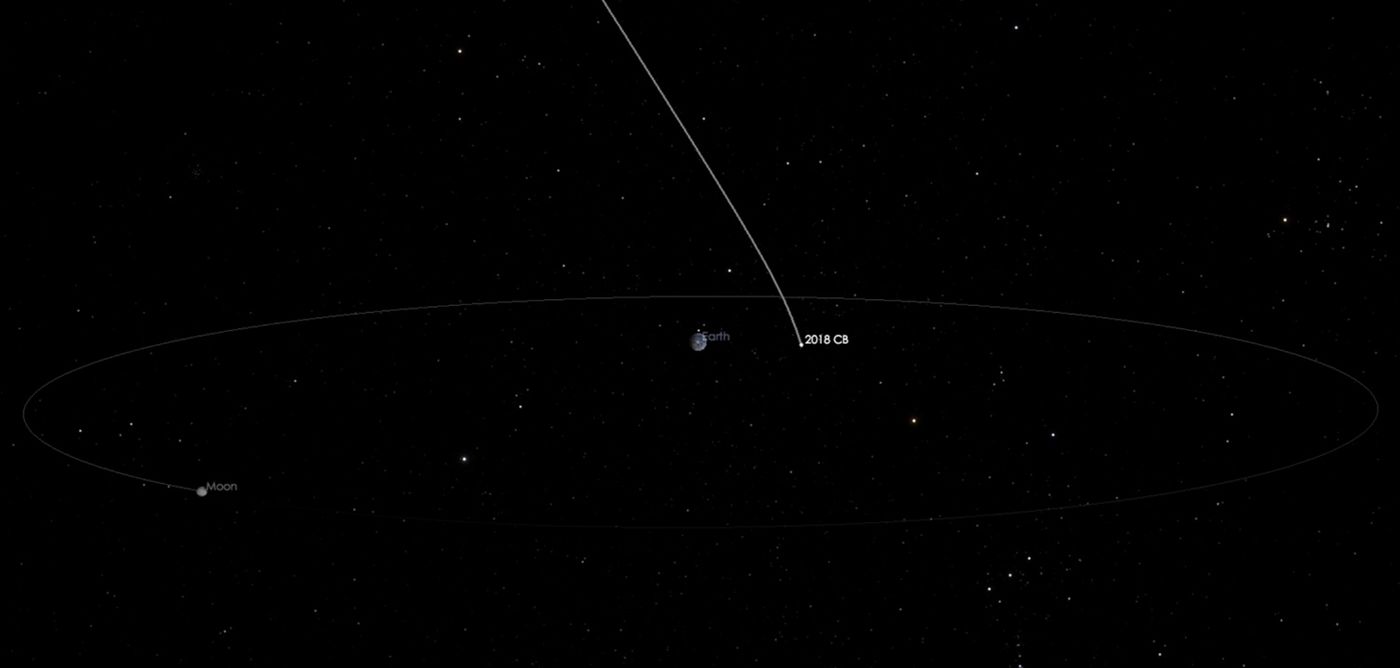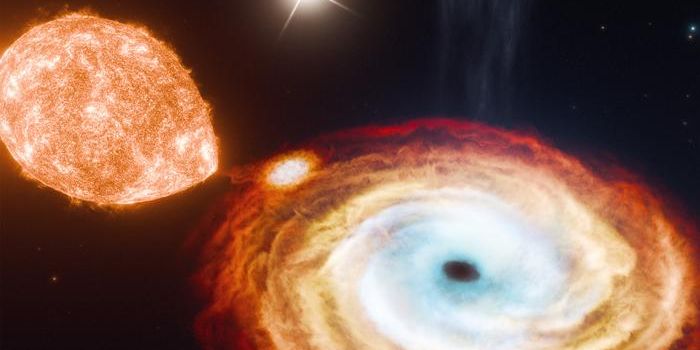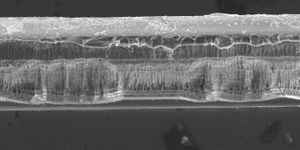Earth Sees Two Close Calls With Asteroids This Week
Asteroids from our solar system harmlessly pass the Earth all the time, but not all of them get up close and personal to our planet. That aside, NASA says we can expect a twofer this week as two recently-found small asteroids pass within just one lunar distance of our planet.
Astronomers at the Catalina Sky Survey (CSS) near Tucson, Arizona first discovered the two small asteroids on February 4th. They’ve since been named 2018 CC and 2018 CB.
Image Credit: NASA/JPL-Caltech
2018 CC already passed our planet on Tuesday, February 6th at approximately 3:10 P.M. Eastern time. Citing NASA, 2018 CC measured between 50-100 feet across and flew past the Earth from only 114,000 miles away.
While that seems like a long way away for most people, it’s actually somewhat close in astronomical terms. The Moon resides nearby 238,900 miles away from Earth on average, which means that 2018 CC passed within half of one lunar distance at its closest approach.
As for 2018 CB, it hasn’t passed our planet just yet. Astronomers say 2018 CB will make its pass on Friday, February 9th and that its closest approach will be made by 5:30 P.M. Eastern time.
Related: FEMA and NASA are working together to plan for asteroid emergencies
Compared to 2018 CC, 2018 CB is more massive and should pass our planet much more closely. It measures about 50-130 feet across and should come within just 39,000 miles of our planet. Notably, it’s not very often that asteroids of this caliber fly this close to Earth.
"Although 2018 CB is quite small, it might well be larger than the asteroid that entered the atmosphere over Chelyabinsk, Russia, almost exactly five years ago, in 2013," explained Paul Chodas, the manager of the Center for Near-Earth Object Studies at NASA's Jet Propulsion Laboratory in Pasadena, California.
"Asteroids of this size do not often approach this close to our planet -- maybe only once or twice a year."
Related: Could an asteroid knock the Moon off its orbit?
Astronomers around the globe will undoubtedly seize this opportunity to study the asteroid in detail. Using methods like telescope observations and surface-scanning radar systems, they can learn more about the asteroid’s physical features and fine-tune its projected trajectory for the future, among other things.
Source: NASA









